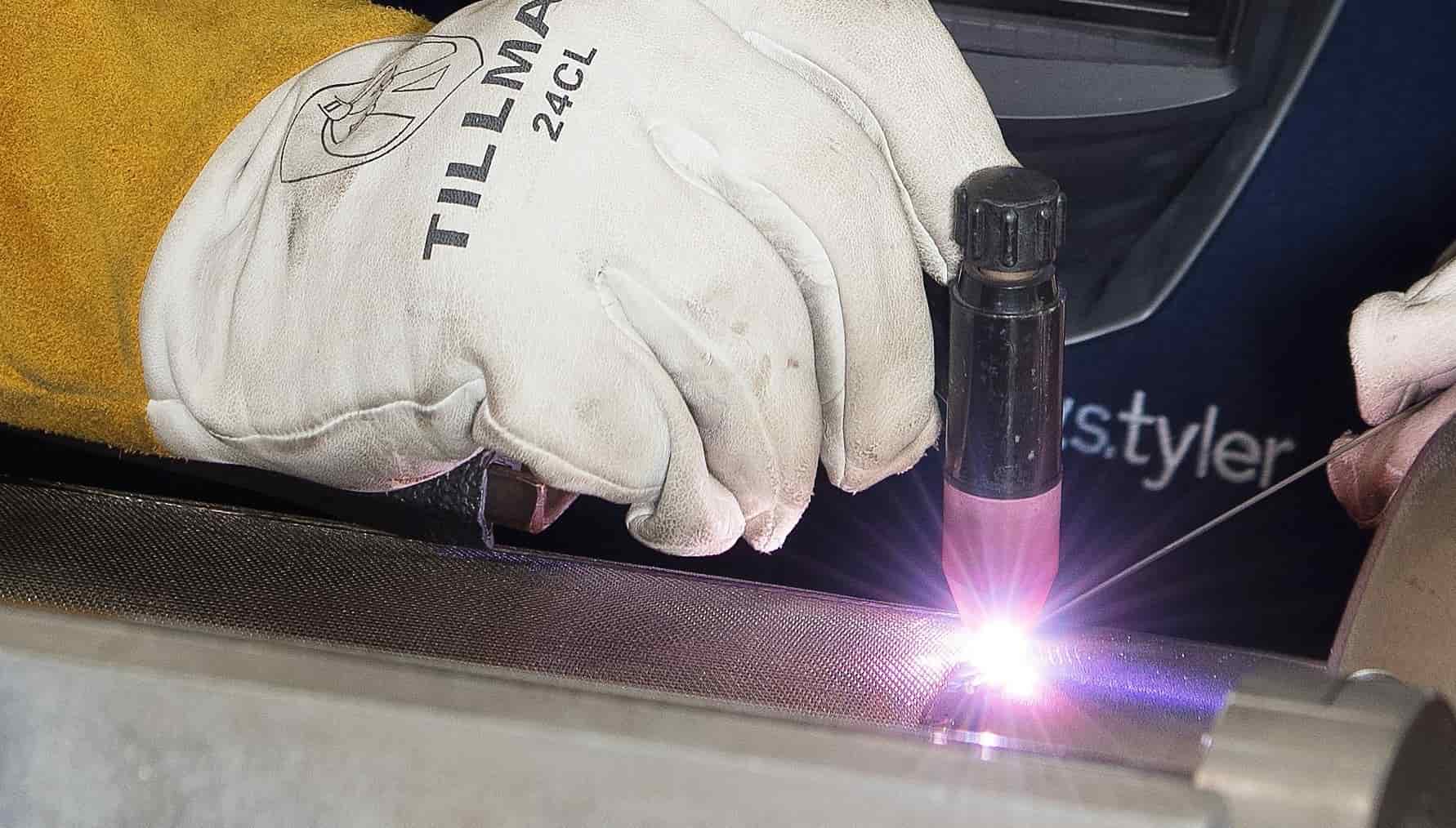Designing Wire Mesh Sand Screens: 316-L Stainless Steel vs Alloy A20
Premium sand control screens are an essential element when forging raw oil from offshore oil wells. When designed properly, they work to filter out various sediments which could potentially accumulate and harm the equipment used in refining facilities.
That said, an integral part of designing sand screens that perform is implementing a wire mesh alloy that can survive the environment of the application. But with 316-L and alloy A20 both standing as reliable options, which one makes more sense for you?
W.S. Tyler is a prominent wire mesh component supplier in the oil and gas industry known for manufacturing premium wire mesh sand screens that provide optimal filtration. We strive to use our 150 years of wire weaving experience to help petroleum engineers remove the filtration roadblocks associated with oil mining.
That's why we wrote the following article highlighting the key differences between 316-L stainless steel and alloy A20, giving you a better idea of which you should use. It will encompass:
- How 316-L stainless steel is defined in the wire mesh industry
- The benefits 316-L stainless steel bring to wire mesh sand screens
- How alloy A20 is defined in the wire mesh industry
- The benefits alloy A20 bruins to wire mesh sand screens
- Determining which alloy you should use to fabricate your wire mesh sand screens

What Is 316-L Stainless Steel?
In the world of woven wire mesh, 316 stainless steel is the most prominently used 300 series stainless steel alloy used to weave wire mesh products. Its chemical composition is made up of 16% chromium, 8% nickel, 2% molybdenum, and small traces of carbon.
The "L" tag in 316-L means that it is a low-carbon variant of 316. In fact, 316-L stainless steel contains less than .03% carbon.
What Are the Benefits of Using 316-L Stainless Steel for Your Wire Mesh Sand Screens?
As it has such a low carbon content, 316-L stainless is known for having a reduced presence of carbide precipitation. As a result, this particular 316-L variant has a relatively high resistance to corrosion.
This proves to be especially beneficial when 316-L sand control screens are exposed to increased amounts of moisture. That said, it should be noted that the most carbon content in an alloy, the more susceptible it will be to rust and corrode in deep sea applications.
What Is Alloy A20?
When weaving wire mesh, alloy a20 is best defined as a stainless steel variant that is classified as an austenitic alloy. It contains less than 50% and is known for its desirable resistance to corrosion.
Further more, alloy A20 is typically comprised of 32% nickel, 19% chromium, .06% (max) carbon, 3% copper, 1% silicon, 31% iron, 1% niobium, 2% manganese, and 2% molybdenum.
What Are the Benefits of Using Alloy A20 for Your Wire Mesh Sand Screens?
The lower iron content and increased copper content of alloy A20 allow it to withstand exposure to harsh environments. More specifically, applications that would expose the sand control screen to sulfuric acid.
That said, it also provides exceptional resistance to various forms of corrosion. This is particularly beneficial when pitting, stress, and chloride ion corrosion is a concern.
Which Wire Mesh Sand Screen Alloy Is Right for Me?
Determining whether you should use 316-L or alloy A20 ultimately comes down to the environment in which you will be forging oil.
For the most part, alloy A20 is going to provide corrosion resistance that is more desirable than 316-L. This includes better pitting, stress, and chloride ion resistance.
In fact, 316-L is particularly known to endure cracking from stress corrosion when placed in harsher environments.
All things considered, the heightened strength, hardness, and corrosion resistance of alloy A20 is typically reserved for severe deep water sand control applications. But if you are working with a standard sand control application, 316-L will be more than adequate.
Learn How Much Your Next Premium Wire Mesh Sand Screens Will Cost
Selecting the right alloy to fabricate your wire mesh sand screens will help ensure your screens deliver optimal and prolonged oil filtration. More times than none, 316-L stainless steel can deliver enough corrosion resistance and durability to get the job done.
But if you are mining oil in relatively harsh, deep-sea environments, alloy A20 may be required.
But once you start to get an idea of the alloy and other mesh specifications you think you will be using, you should come to understand how the different elements will affect the cost of the final sand screen. Knowing this will allow you to ensure you stay within budget.
With a reputation for manufacturing some of the more reliable premium wire mesh sand screens on the market, W.S. Tyler is here to achieve the reliability, quality, and accuracy you need.
To learn about the overall cost of a wire mesh sand screen, read the following article:
About Ronnie Brown
Ronnie is the Content Writer for W.S. Tyler and has four years of experience as a professional writer. He strives to expand his knowledge on all things particle analysis and woven wire mesh to leverage his exceptional writing and graphic design skills, creating a one-of-a-kind experience for customers.



